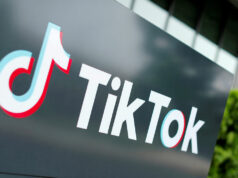Firms urged to future-proof vs cyber risks
By Denise A. Valdez
Reporter
AS THE Philippines saw a quick rise in cybersecurity awareness and data protection efforts in recent years, companies are now urged to look far ahead to prepare for newer threats that are expected to come in three to five years time.
Content delivery network service provider Akamai Technologies said the best way to future-proof is by teaming up with a cybersecurity provider that would help a business form a strategy against the ever-progressing attacks that emerge.
“Invest in a provider that is going to care about what’s happening in three to five years time. Because you genuinely can’t possibly know… Find someone you can trust to do that for you, and to work with you and advice you as to what’s occurring elsewhere around the world that you may want to think about building into your strategy,” Akamai Technologies Regional Vice President Vaughan Woods said in an interview in Makati City last week.
“The other thing you could do is simply prepare a strategy for how to deal with it. Don’t just buy tools. Have an overall strategy… And that needs to include what your team is going to look like, how you communicate, how you talk to your board about cybersecurity,” he added.
Mr. Woods pointed out that there is a growing level of harm that cyber attackers may cause, as it “used to be a 14-year old kid with a hoodie and a can of Red Bull,” but now they are organized groups, governments, or business competitors.
“As the Philippines has evolved in the sense of its digital strategy, so has the threat externally evolved from different actors. And we’re seeing more common, more frequent attacks, but also more well-orchestrated and more clever attacks on the Philippine market,” he said.
But he said the good news is companies are now more aware of what needs to be done to put the level of cybersecurity in the country at par with the rest of the world.
“The rate of growth from a security maturity perspective has definitely been phenomenal in the Philippines. I think globally, there’s been a steady growth of awareness of security threats. But from where we are today, 2019, and going back to 2016, where the Philippines was, certainly the curve has been a lot steeper. The rate of growth has been a lot steeper for the Philippines,” Akamai Head of Security Technology and Strategy for Asia-Pacific Fernando Serto said.
Mr. Woods added that C-level executives are starting to change their mindsets and are now more willing to spend time and resources to heighten guards against cyber attackers.
“What we learned was that boards (of directors) are now beginning to believe that they must invest in cybersecurity. We’re now at that juncture where the senior executives of a company understand that they need to invest. When you’re at that stage, the cost (of cybersecurity) is no longer prohibitive, because they will need to invest,” he said.
“As soon as you understand the value of the assets that you’re trying to protect, you can dictate how much money is worth investing to protect those,” Mr. Serto added.
Mr. Serto said it is important that companies are receptive to newer technology — whether it be for cyber protection or operational enhancement — to remain relevant in a fast-evolving digital landscape that’s shaping the mindset and behavior of both businesses and its customers.
“My biggest advice to any organization so it can survive in three to five years is that to be more open-minded on how they engage with their customers and how they deploy applications to engage with their customers,” he said.
“One thing that we hear time and time again is that the older organizations say that’s now how we do things. Trying to adopt exactly the same technology that they’ve had for 20 years in today’s digital world, it just doesn’t work. So they have to be more open-minded to doing things differently,” he added.



